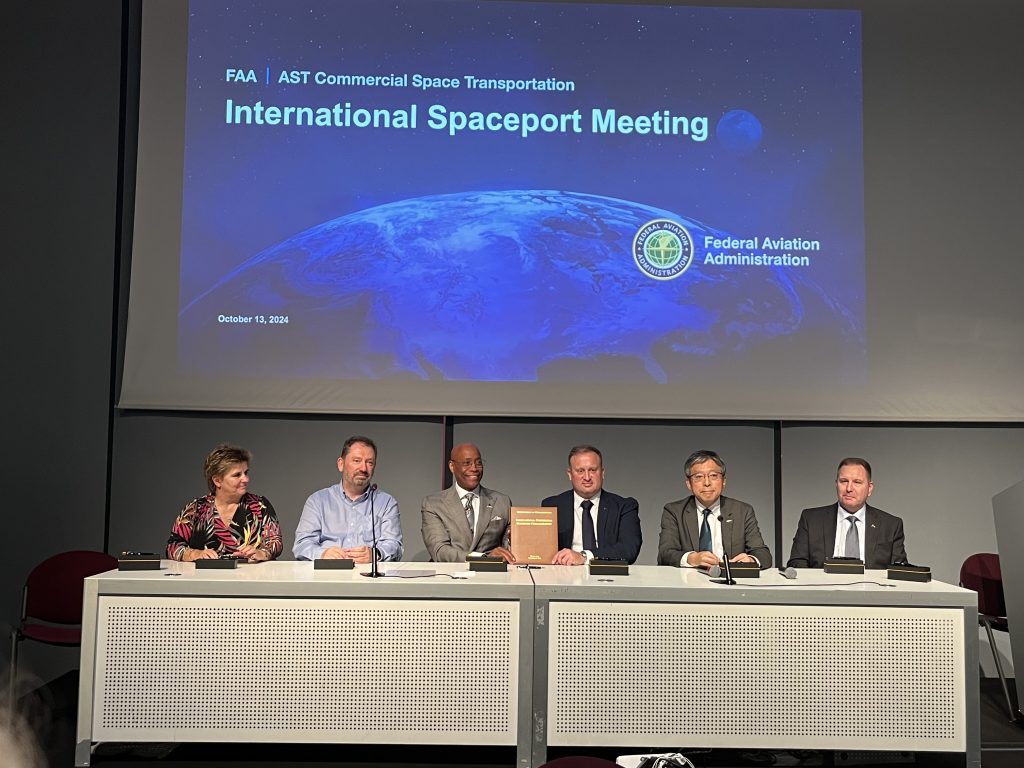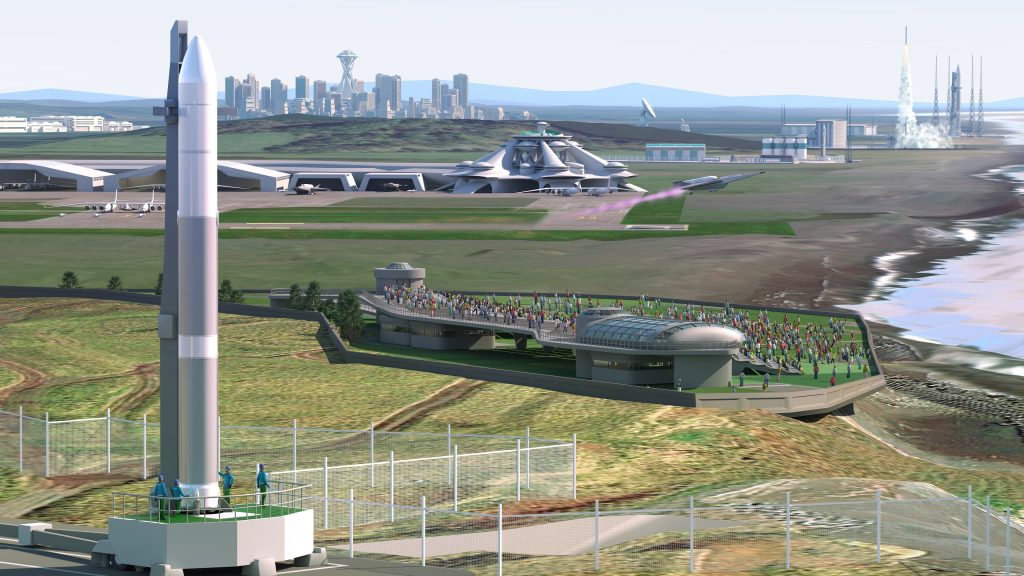Exploring Potential Strategic Collaboration to establish International Spaceport Standard

MILAN, Italy – Taiki Town Office and SPACE COTAN Co., Ltd., which jointly develop and operate “Hokkaido Spaceport”(hereinafter referred to as “HOSPO”), a commercial spaceport open to the private sector in Asia, announced that eight commercial spaceports located across five continents signed a Memorandum of Understanding (MOU).
The MOU will establish a forum to explore potential strategic collaboration in a range of areas of common interest and introduce a dialogue on establishing international spaceport standards. The signatories believe these discussions will strengthen assured access to space and improve affordability. The discussions facilitated by this MOU will also aid in the creation of shared opportunities to introduce technology innovations and foster global cooperation in the rapidly growing commercial space sector.
The inaugural signatories to the MOU include Virginia Spaceport Authority (VSA), Norfolk, Virginia, USA; Space Centre Australia, Cairns, Queensland, Australia; Pacific Spaceport Complex Alaska, Kodiak, Alaska, USA; Stargate Peru S.A.C., Piura, Peru; Spaceport, Shetland, Scotland, United Kingdom; Hokkaido Spaceport, Hokkaido, Japan; Sweden Space Centre, Kiruna, Sweden; Spaceport Sutherland, Sutherland, United Kingdom(hereafter referred to as “the Parties”).
Increasing number of launch operators in multiple spaceports and starting of P2P flights require collaboration of spaceports
As demand for satellite launches continues to grow, an increasing number of launch operators are exploring the potential of utilizing multiple spaceports worldwide to secure launch opportunities. Furthermore, in view of the forthcoming launch of point-to-point (P2P) flight between continents, collaboration among spaceports, which will serve as platforms for such transportation, is underway. Each spaceport is tasked with achieving high-frequency launches by ensuring interoperability and standardization of facilities and equipment, which led to the conclusion of this MOU.
MOU SCOPE
The Parties shall explore agreed upon topics and actions for which collaboration could provide mutual benefits to the spaceports, commercial launch providers and satellite operators. Initially, these topics include, but are not limited to:
- Identify commonalities in the strategic objectives and mid-/long-range plans of each operator and consider ways for each operator to collaborate
- Define policies, standards, processes, and operations for cost reduction through rationalization of launch site operations, improvement of responsiveness of launch site operations, and high frequency launches.
- Study interoperability to enable overseas launch vehicles to be operated at each operator’s spaceport.
- Establish a secure information management system specialized for this activity.
- Provide information such as launch vehicle specifications and launch pad requirements to each operator
- Provide an overview of each operator’s services, such as launch site operation methods, ground facilities and equipment, and downrange
- Consider cooperation in other areas, such as personnel exchange
MOU LINK
Statement
Yutaka Kurokawa, Mayor of TAIKI TOWN
The space industry is poised for significant growth and expansion in the private sector, with spaceports becoming increasingly vital as the demand for space transportation rises. We recognize the value of collaboration with spaceports in other countries as a crucial driver of the space industry’s future development. We are committed to working with spaceports of other countries to contribute to the advancement of the space industry.
Yoshinori Odagiri, CEO of SPACE COTAN CO., LTD.
It is a great honor to have signed the MOU with the seven commercial spaceports across five countries. As the utilization of space by the private sector progresses, there is growing demand for frequent launches of rockets and satellites, as well as for international spaceport collaboration. HOSPO will cooperate with the other spaceports to pursue safe and sustainable spaceport operations that enable frequent launches of a variety of vehicles, including future Point-to-Point (P2P) flights, thereby contributing to the development of the space industry and the development of Hokkaido and Japan.
Signatories
Pacific Spaceport Complex – Alaska
Pacific Spaceport Complex – Alaska is operated by Alaska Aerospace Corporation, a state-owned company located on Kodiak Island, Alaska, USA. The spaceport has been launching suborbital and orbital missions since 1998. This U.S. Federal Aviation Administration-licensed orbital spaceport provides flexible, responsive and low-cost access to space for government and commercial customers.
Virginia Commercial Space Flight Authority (Virginia Spaceport Authority)
Virginia Commercial Space Flight Authority is a political subdivision of the Commonwealth of Virginia and owns and operates the Mid-Atlantic Regional Spaceport (MARS) located at Wallops Island, Virginia, USA. VSA’s mission is to provide assured access to space by operating, maintaining, and growing a premier spaceport, stimulating aerospace-related economic development in the Commonwealth, and promoting educational opportunities in science, technology, engineering, and math (STEM).
SaxaVord Spaceport (UK)
SaxaVord Spaceport (UK) is the first fully licensed vertical launch spaceport in Europe and is located in Shetland, Scotland, United Kingdom. Shetland is the ideal location for Europe’s premier spaceport, with a long history of serving and supplying complex industries. SaxaVord Spaceport can support a wide range of requirements, from engine test benches to research and development. The spaceport has been designed to host a wide variety of launch missions.
Sutherland Spaceport (UK)
Sutherland Spaceport (UK) is located on the northern coast of Scotland and is poised to be the UK mainland’s first operational vertical launch site for small satellites. The Spaceport is well placed to meet the growing demand for European satellite launches in the commercial space sector. Launch operations conducted from Sutherland Spaceport provide safe access to high inclination Low Earth Orbits (LEO), Polar Orbits and Sun Synchronous Orbits (SSO) with orbital inclinations from 83° to 100°. With a clear focus on sustainability, Sutherland Spaceport plans to minimise its environmental impact, with the potential to contribute significantly to the UK’s space industry and regional economic growth.
Space Centre Australia(SCA)
Space Centre Australia is Australia’s first large-scale multi-use spaceport. It is committed to advancing the Australian and international space industries. Located in Northern Queensland, SCA is situated away from competing air corridors, in a no-population density area, allowing clear access to a range of orbital positions. Its facilities are safe and secure, providing close access to various launch destinations.
Sweden Space Centre(SSC)
Swedish Space Corporation has been operational since 1966. It is presently used by the international scientific community for launching sounding rockets for microgravity and atmospheric research as well as high altitude balloons for astronomy, atmospheric research and drop tests of space and aerial vehicles. A new infrastructure also offers reusable rocket tests, engine and fuel tests, as well as launches of satellites, making it the first site on EU territory with orbital launch capability.
Stargate Peru S.A.C.
Stargate Peru S.A.C. is the forthcoming spaceport pending approval of the Peruvian Air Force and Peruvian Space Agency. Plans are to build a launch pad in Piura, Peru, providing a global gateway forsatellites, airships, and other space resources. The site is roughly 300 miles from the equator in an area with favorable weather conditions throughout most of the year with immediate access through the South Pacific.
About Taiki Town Office
- Representative: Mayor Yutaka Kurokawa
- Location: 33, Higashi-Hondori, Taiki-machi, Hiroo-gun, Hokkaido
- Overview: A town with a population of 5,400 where agriculture, fishing, and forestry are the core industries. The town began attracting aerospace experiments in 1985, and has been promoting the development of a space city for about 40 years since then. Hokkaido Spaceport was opened in 2021 as the global commercial spaceport in Taiki Town. The goal is to create an aerospace industry cluster and ecosystem with Hokkaido Spaceport as its core.
- WEB: https://www.town.taiki.hokkaido.jp/
About SPACE COTAN Co., Ltd.
- Representative: Yoshinori ODAGIRI, President and CEO
- Location: 98 Nishihondori, Taiki-machi, Hiroo-gun, Hokkaido
- Business Overview: Overall promotion of HOSPO project based on mandate from the Taiki town, and operation of HOSPO.
- WEB: https://hokkaidospaceport.com
About Hokkaido Spaceport(HOSPO)
HOSPO is a commercial spaceport open to the private sector in Asia, which was established in Taiki, Japan.Taiki Town has been attracting the aerospace industry for about 40 years, and is said to be one of the most suitable locations for a world-class spaceport due to its geographical advantages, such as an expansive sea to the east and south for launching rockets, and a large land area that allows for high expansion of the launch site. The suborbital launch site “LC-0” is already in operation, and private rockets have reached space three times in the past. To realize our vision of “creating an aerospace industry cluster and ecosystem”, we are developing new launch and test sites for launch vehicles, as well as contributing to the development of launch vehicles and the space industry as an infrastructure. We aim to contribute to regional development and Japan’s economic revitalization. We are currently working on a new orbital launch site “LC-1”.

